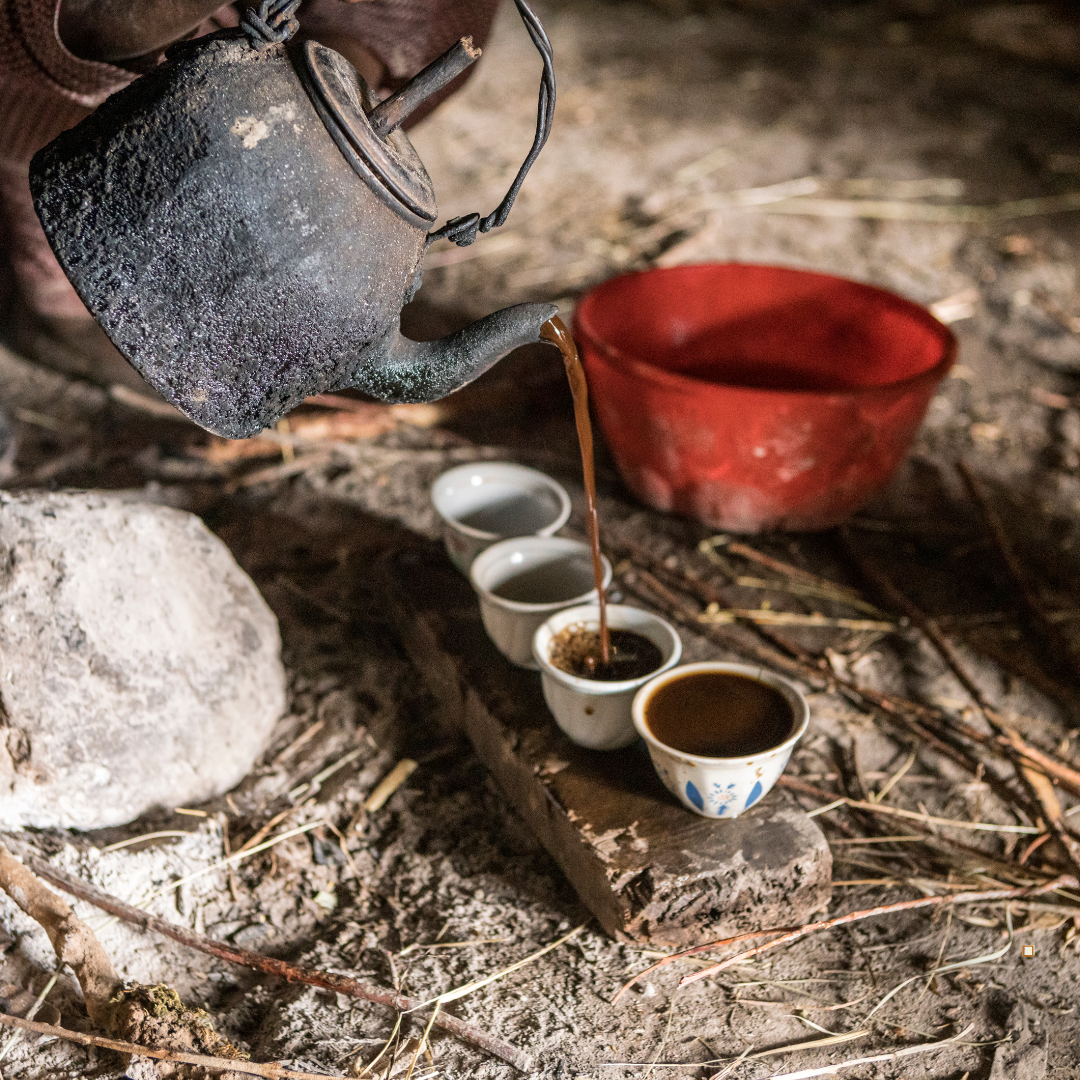
Cold Brew Recipes Using Ethiopian Yirgacheffe Coffee
Awakening the Soul of Cold Brew
Ethiopian Yirgacheffe coffee brings a gentle, floral brightness that’s perfectly suited for cold brewing, inviting you to experience refreshing flavors unlike anything else. When I first began experimenting with cold brew at my roastery, I discovered how its slow extraction process unlocks the delicate sweetness and sparkling citrus undertones inherent in these beans. Suddenly, coffee that’s often known for its clarity and subtle elegance takes on an entirely new form: a silky, low-acid brew that surprises you with lingering notes of fruit and honey. It’s a gateway to discovering just how versatile your beloved high-altitude coffee can be.
Cold brewing was once an under-the-radar technique, but it’s rapidly gained fans who appreciate its smooth, full-bodied taste. Instead of using hot water to draw out the bright acidity of the grounds, cold brew relies on time—steeping coarse coffee in cool water for hours. The result is a gentle extraction that amplifies natural sweetness and mutes harsh, bitter flavors. It’s also highly adaptable: once you’ve made a concentrated base, you can mix it with water, milk, or other creative ingredients to craft a beverage tailor-made for your taste buds.
Crafting the Perfect Foundation
Ethiopian Yirgacheffe coffee remains one of my favorite beans for cold brewing, mainly because of its balance between floral top notes and underlying sweetness. To get started, select a coarse grind to ensure an even extraction. Aim for a 1:8 coffee-to-water ratio if you’re making a concentrate, or a 1:10 ratio for a more direct-ready brew. The difference lies in how you plan to enjoy it: a stronger concentrate can be diluted or combined with milk, while a lighter brew is more straightforward to drink straight from the fridge.
Another important factor is the water you use. Purified or filtered water can highlight the coffee’s inherent complexity without overshadowing it with mineral or chlorine tastes. Once you’ve mixed the grounds with cool water, place the container in your refrigerator for about 12-16 hours. Stir briefly at the start, ensuring that the grounds are fully saturated. From there, patience takes over—time will pull the vibrant flavors from these beans and infuse them into the water.
Ethiopian Yirgacheffe Coffee in a Classic Cold Brew Recipe
Ethiopian Yirgacheffe coffee offers a mesmerizing transformation when paired with cold brew techniques. Try this straightforward recipe: combine one cup of coarsely ground beans with eight cups of cold, filtered water in a large container. Give it a gentle stir, then cover and refrigerate for 14 hours. After steeping, strain it through a fine mesh filter or cheesecloth to remove the grounds. You’ll be left with a smooth, sweet liquid that tastes slightly floral and carries hints of citrus zest. Serve it over ice, or cut it with equal parts water if you prefer a milder flavor. Every sip will remind you that this brew began its journey high in the Ethiopian mountains, nurtured by nutrient-rich soil and cool altitudes.
For those who enjoy a little experimentation, consider adding simple syrup infused with herbs like lavender or rosemary to complement the coffee’s delicate aromatics. Alternatively, toss in a few slices of fresh orange peel while steeping to bring out the coffee’s citrusy nuance. The key is to realize how adaptable this method can be—simple tweaks in steeping time or infusion ingredients can reveal multiple sides of your favorite beans, making each pour a delightful surprise.
Elevating Your Cold Brew Concentrate
Once you have your cold brew concentrate, the real fun begins. The beauty of a concentrate is that it’s a robust base you can rework into a variety of drinks. For a strong yet balanced morning cup, mix equal parts concentrate and water. If you’re craving something creamier, combine the concentrate with milk or a non-dairy alternative. Adding a pinch of salt can enhance sweetness, while a touch of honey can mellow the tartness of any fruit undertones.
Consider layering the concentrate in a glass with crushed ice, then topping it with cold foam or sweetened condensed milk for an indulgent treat. You might also experiment with a sparkling cold brew—add a little seltzer water and a dash of fruit syrup for a refreshing twist. It’s remarkable how many ways you can repurpose the same brew, all while relishing the nuanced sweetness that sets this Ethiopian coffee apart.
Iced Lattes and Refreshing Mocktails
Cold brew concentrate provides a foundation that can stand up beautifully in iced lattes. If you enjoy a chilled latte in the morning, simply blend your concentrate with milk, a drop or two of vanilla extract, and sweetener of your choice. The understated acidity of these beans means the result is silky and balanced, without turning overly bitter when combined with milk.
Thinking beyond lattes, you can also create coffee mocktails that rival the best café specialties. Mix your cold brew concentrate with tonic water, add a splash of lemon juice, and garnish with a sprig of fresh mint for a sophisticated, thirst-quenching beverage. Alternatively, stir in a bit of homemade ginger syrup to play up the bright, fruity side of the coffee. The possibilities are limitless, held back only by your imagination and your willingness to explore.
Keeping it Simple: Slow Steeping with Minimal Gear
One of the greatest appeals of cold brew is how little equipment you need. A mason jar, a pitcher, or even a French press can serve as your steeping vessel. While fancy cold brew towers exist, they’re not essential to achieve a delightful flavor. It’s the slow, deliberate extraction that captures the essence of these beans, making cold brew an approachable craft for any home brewer with a curious spirit.
Once you’ve strained your cold brew, make sure to store it in a sealed container in the refrigerator to preserve freshness. You can typically enjoy it for up to a week, though the most vibrant flavors will shine in the first few days. This gentle brewing method preserves the floral notes while offering a mellow complexity that can be revisited each time you pour a new glass.
Experimenting with Brewing Times and Ratios
If the idea of a 14-hour steep sounds too drawn-out for your schedule, you can shorten or lengthen the time to find your personal preference. A 12-hour brew might yield a more nuanced, less intense extraction, whereas a full 18 to 24-hour steep can amp up the body and sweetness. The coffee-to-water ratio is equally flexible: more grounds can give you a bold concentrate, while fewer grounds produce a lighter, session-friendly brew that you can drink throughout the day. The best approach is to start with a proven recipe, then let your own palate guide you to the perfect cup.
Remember, cold brew’s beauty lies in its forgiving nature. Even slight variations in ratio or timing often produce a pleasant result. This method doesn’t demand the precise water temperature or vigilant watch you might maintain for a pour-over. Instead, it rewards patience, letting you discover a new dimension in beans you might already love hot.
How Ethiopian Yirgacheffe Coffee Transforms Your Cold Brew Experience
When you choose Ethiopian Yirgacheffe Coffee from our curated variety selection, you’re tapping into the exact flavors that flourish during the cold brew process: gentle florals, balanced acidity, and a distinctive sweetness. At Frontier Coffee Roasters, we roast these beans in small batches to maintain their nuanced character and offer premium coffee beans with quick delivery so you can dive into your brewing experiments without delay. Each time you pour a glass of cold brew made from this high-altitude coffee, you’ll taste the difference that careful sourcing and conscientious roasting can bring—turning a simple cup into a soulful, refreshing ritual. Learn more at the Frontier Coffee Roasters Coffee Hub and the Ethiopian Yirgacheffe Coffee Hub.

